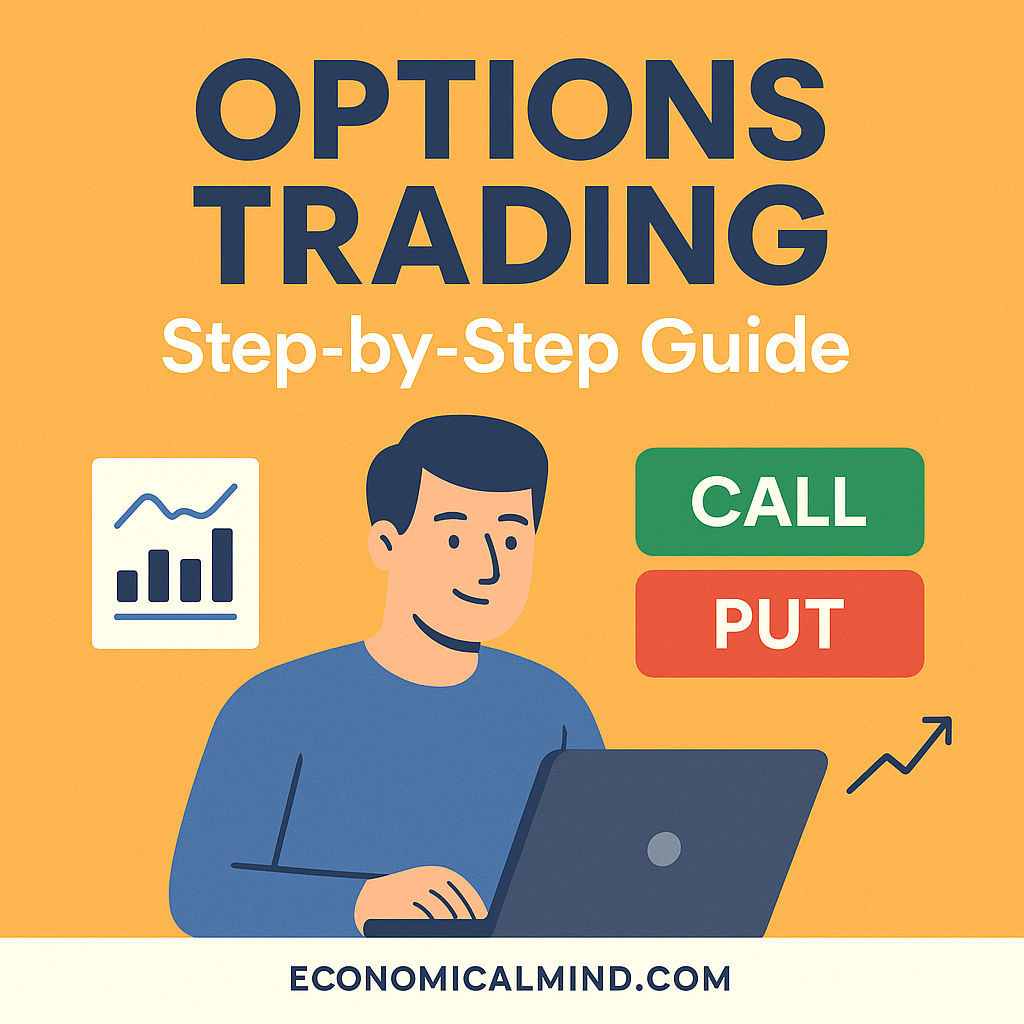
Why Options Trading Matters
Options trading can be one of the most powerful ways to grow wealth — or one of the fastest ways to lose it if you’re unprepared.
Unlike buying stocks, options let you control shares for a fraction of the cost, hedge against losses, or profit from market movements without owning the underlying asset.
But before you trade, you need to understand how these contracts work and what the risks really mean.
Step 1: Understand What Options Are
An option is a contract that gives you the right — but not the obligation — to buy or sell a stock at a set price before a certain date.
There are two main types:
- Call options: Give you the right to buy a stock at a certain price (you profit if the stock goes up).
- Put options: Give you the right to sell a stock at a certain price (you profit if the stock goes down).
Each contract typically represents 100 shares of the underlying stock.
Step 2: Learn the Key Terms
Before placing your first trade, get familiar with basic options terminology:
- Strike price: The price at which you can buy or sell the stock.
- Premium: The price you pay to buy the option.
- Expiration date: When the contract ends.
- In the money (ITM): The option currently has value.
- Out of the money (OTM): The option is worthless — for now.
- Time decay: The option loses value as it approaches expiration.
Knowing these terms helps you understand how prices move and why timing is critical in options trading.
Step 3: Choose the Right Brokerage
Not all brokerages allow options trading, and those that do often require approval levels based on your experience and goals.
Popular options-friendly platforms include:
- TD Ameritrade (thinkorswim)
- Fidelity
- Robinhood
- Webull
- Interactive Brokers
When you apply, you’ll answer questions about your trading experience and financial background.
Start at a Level 1 or Level 2 approval to access basic strategies like buying calls and puts before advancing to complex trades.
Step 4: Start with Basic Strategies
Begin with simple, lower-risk strategies to learn the mechanics without overexposure:
1. Buying Calls:
You expect the stock to rise.
Example: Buy a call at $100 strike — if the stock goes to $110, your contract gains value.
2. Buying Puts:
You expect the stock to fall.
Example: Buy a put at $100 strike — if the stock drops to $90, your contract gains value.
These “long” strategies are limited to the premium you paid, meaning your maximum loss is known upfront.
Step 5: Manage Risk and Position Size
Options can move quickly — sometimes 50% or more in a single day. That’s why managing risk is crucial.
- Never risk more than 1–2% of your portfolio on any single trade.
- Use stop-loss orders to limit downside.
- Avoid “all-in” trades, even if you’re confident.
If you’re wrong, you lose the entire premium. Treat each trade as a learning opportunity, not a gamble.
Step 6: Learn the Greeks
The “Greeks” are metrics that measure how an option’s price reacts to different factors.
The main ones to know:
- Delta: How much the option moves per $1 change in stock price.
- Theta: How much value the option loses daily (time decay).
- Gamma: How delta changes as the stock moves.
- Vega: How sensitive the option is to volatility changes.
Understanding these helps you predict how your option will behave under different market conditions.
Step 7: Practice Before You Trade Real Money
Most brokerages offer paper trading accounts that let you simulate real trades without risking cash.
Use this to:
- Practice strategy execution.
- Learn how volatility impacts prices.
- Test your reactions to losses and gains.
Once you’re consistent with virtual trades, move to small real positions to build confidence gradually.
Bonus Tip: Avoid Common Beginner Mistakes
- Don’t trade earnings announcements until you understand volatility spikes.
- Don’t hold options to expiration unless necessary — time decay kills value fast.
- Don’t buy “lottery” contracts far out of the money; they often expire worthless.
Options can be powerful, but patience and discipline always win over emotion.
Final Thoughts
Options trading isn’t about luck — it’s about strategy.
By learning the fundamentals, managing your risk, and starting small, you can use options to protect your portfolio or boost returns responsibly.
Always remember: mastering options takes time, but once you understand how they work, they can become a valuable part of your long-term investing toolkit.
